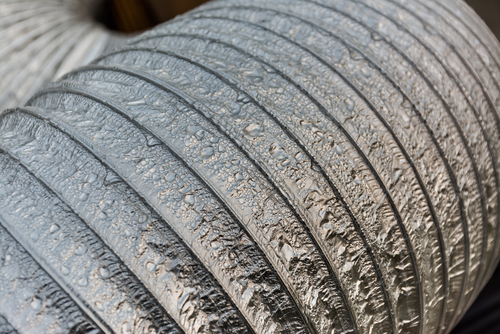You depend on efficient cooling and heating to keep your Savannah home comfortable and your energy bills within reason. A/C and furnace upgrades help enhance comfort with smooth airflow, and they can boost efficiency by up to 50 percent compared to older models. But have you considered your home’s ducts? The following ductwork design principles are prerequisites that improve both home energy performance and comfort.
Ductwork Design
The HVAC industry’s best practices for ductwork design were developed by the Air Conditioning Contractors of America (ACCA). The organization’s Manual D guidelines meticulously outline how to design and install ducts to maximize efficiency and balance airflow. Ductwork design elements include location, sizing, supply and return airflow, and more.
Unfortunately, not all duct installers follow ACCA’s guidelines. For example, some installers size ductwork solely by a home’s square footage. Many older homes use cavities in walls and other areas to convey cooled and heated airflow. These practices are unacceptable in today’s building science.
Approved Duct Materials
Ductwork must be fabricated from approved and permanent materials. Sheet metal ducts are most widely used; they’re lightweight and simple to manipulate or fabricate on site. Fiberglass flexible ducts have gained popularity in recent years. Flex ducts offer the advantage of easy maneuverability for soft turns to minimize airflow restrictions. Flex ducts are also insulated, which allows them to be installed in unconditioned spaces with little heat gain/loss.
However, metal ducts offer lower static pressure, which reduces blower motor wear. Metal ducts installed outside the insulation barrier must be insulated. Metal ducts are also available fabricated with insulation between sheet metal panels.
Best Ductwork Location
Attics, crawl spaces and basements can reach extreme temperatures in the height of summer and winter. Even with insulation, ductwork is susceptible to heat gain and loss issues. This means rooms located farther from the A/C and furnace won’t receive adequately cooled and heated airflow. It also means you’re paying to cooling and heating dollars are being spent in the attic and basement.
To prevent heat gain/loss, locate ductwork inside the home’s insulation barrier. This is more easily accomplished in new home construction; however, you may also install sealed chases or utilize raised floors and drop ceilings when available. Ducts still need to be sealed tight, but lowering the temperature differences between ducted airflow and the surrounding air reduces heat gain/loss by conduction.
Equal Supply and Return Airflow
You’re unlikely to enjoy low energy bills and maximum comfort if your home’s air supply and air return aren’t balanced. Unbalanced air pressure promotes air infiltration, poor comfort and higher energy bills. Supply ducts that are too small are going to make a lot of noise. If return ducts are undersized, a substantial pressure drop is created across the blower, which can bring it to a grinding halt in a short amount of time.
Make sure your HVAC pro follows these principles for designing supply and return ducts for the best results:
- Install a return grille in each room with a supply register.
- When an equal number of return grilles to registers aren’t feasible, each level of living space should have at least one return grille.
- Closed doors are airflow obstructions. Anticipate obstructions to these rooms with jumper ducts and transfer grilles, which ensure privacy and promote free airflow.
Ductwork Dampers
An HVAC pro can fine tune your home’s air supply by installing manual duct dampers at the trunk and branch connections. Installing duct dampers at this location prevents airflow backup and obstruction in the ducts.
For ultimate efficiency, comfort and convenience, ask your HVAC tech about zoned temperature control. Zoning systems use motorized duct dampers to automatically restrict or permit airflow to each zone depending on your thermostat settings. Each zone has its own thermostat, which may be programmed at a central panel for total indoor temperature control in each area around the clock.
Tight Sealing
Tight sealing can save as much as 20 percent of cooling and heating costs in the average home, according to Energy Star. Metal duct materials should be sealed with sheet metal screws, mastic paste and heat-resistant metal tape. Appropriate collars and straps may be used for portions of flex ducts, if installed. The plenum and trunk — the largest connection — should have an expansion collar to mitigate duct noise. Ductwork should be tested to confirm sealing before final approval.
Learn more about quality ductwork design from the experts at McDevitt Air, or call us at 877-692-9402 to schedule an appointment.
Image Provided by Shutterstock.com


